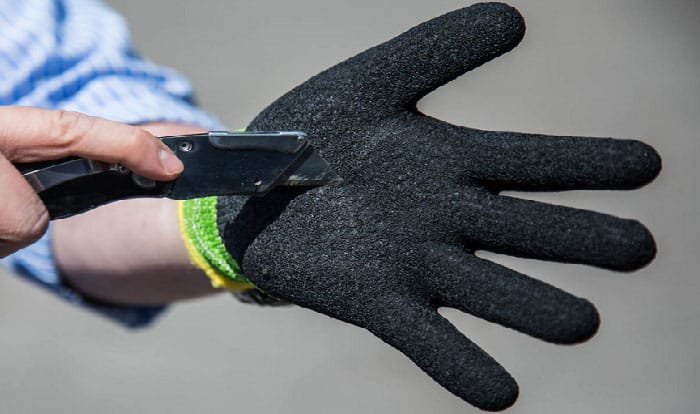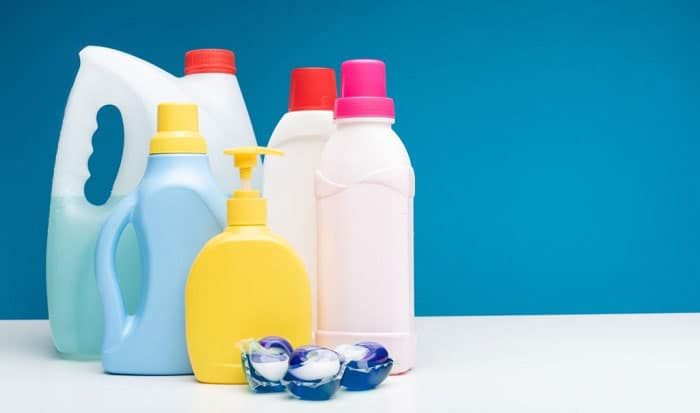Cut-resistant gloves are incredible protective gear for working with sharp objects, especially if your job happens at a fast pace. It is generally recommended to wash and sanitize cut-resistant gloves regularly. If your work involves cutting food, you might need to clean the gloves between uses to prevent food contamination.
But, how to clean cut-resistant gloves? Can I treat them the same way as regular gloves? No worries. Due to the material’s strength and resilience, most cut-resistant gloves are easy to maintain.
Briefly, you need to wash the gloves’ exterior with soap and warm water. Afterward, rinse them gently under running water. Finally, sanitize the pair with proper products if required, hang them to air dry, and wash your hands immediately.
Additionally, “Can you wash cut-resistant gloves in the washing machine?” Yes, but there are a few important points to note, such as the water temperature, types of cleaning detergents, and cycle timing. Dive in for a step-by-step guide.
Table of Contents
What You Will Need
Before we begin, check the product label to know whether your gloves are machine-washable. You can find this information on the inside lining near the wrist. Most of the time, you can machine-wash fabric, HPPE (high-performance polyethylene), and Kevlar. Meanwhile, metal-mesh gloves should be hand-washed.
If your gloves can be put in the washing machine, don’t just throw them in with other random laundry. You need to heed the washing cycle, detergent, and water temperature to avoid damaging the materials. Keep reading; we will provide specific information later on.
If your cut-proof gloves were contacted with raw meat or blood, it’s best to wash them separately by hand to avoid contamination. By the same token, don’t machine-wash highly grimy or soiled cut-resistant gloves. The washing machine won’t be able to get rid of the stubborn spots.
Soap
Grab a commercial laundry soap that doesn’t contain bleach or chlorine-based chemicals. To wash Kevlar gloves, OxiClean detergents are preferred. Besides removing the dirt, such cleaners will help deodorize and brighten the gloves.
Sanitizer or disinfectant
In the food industry, it is mandatory to sanitize your cut-resistant gloves after washing. Hence, you need a sanitizer or disinfectant. Last but not least, make sure you have clean warm water handy.
Steps to Clean Cut-resistant Gloves
Steps to machine-wash the gloves
Step 1: Put the gloves in the washing machine
Place your cut-resistant gloves in a garment bag and zip tightly. Then, toss it in along with other clothing. Remember to wash white gloves with items of light colors and black gloves with items of dark colors.
Step 2: Add detergent
Add an adequate amount of detergent. Don’t use fabric softener or dry cleaning solutions.
Step 3: Set the machine
Cut-resistant gloves can resist temperature up to 400°F (around 200°C). It is recommended to choose a 15-minute delicate cycle with a water temperature of 170°F (77°C). Once everything is set, press start and let the machine do its job.
Step 4: Dry
Lastly, put the gloves in the dryer. We recommend drying them at 170°F (77°C) for 15 minutes. Don’t use dryer sheets. If you want, leave the gloves to air dry.
Steps to hand-wash the gloves
Step 1: Wash the gloves’ exterior
While the gloves are on your hands after use, apply a decent amount of detergent, add lukewarm water, and rub your hands together. Don’t forget the cuffs and fingertips. Repeat the rubbing motions for two to three minutes. The soap will remove all dirt, grime, and bacteria.
Step 2: Rinse
Rinse the gloves under running warm water. Take it slow in this step, make sure the soap comes off entirely. When the exterior is nice and clean, take off the gloves and rinse the interior.
Remember not to flush the inside towards the fingertips. That way, your gloves will easily stretch and lose their shape. Cut-proof gloves can only help prevent cuts if they can hug your fingers snugly. Loose gloves compromise dexterity, which can be a threat to safety.
Thus, turn the gloves inside out and rinse gently. Also, don’t wash the inside with detergent as soap residue can irritate your skin. After that, squeeze to remove excess water. Avoid wringing or twisting your gloves.
Step 3: Sanitize
If you work in the food industry, sanitizing the gloves after washing is a must. There are many types of sanitizers in the market such as QUAT disinfectants, alcohol, and chlorine-based sanitizers. Depending on your job demand, you might want to dip, spray, or quickly wipe the gloves with disinfectants.
Step 4: Dry
Hang the gloves in a cool, ventilated place to dry. When you are done, immediately wash your hands with soap because sanitizers will irritate your skin and can lead to rashes.
Conclusion
Learning how to clean cut-resistant gloves is crucial as it affects your health and safety directly. You should always follow the steps cautiously to ensure optimal results. Take care of the gloves properly and they will take good care of your hands.
If you find the article useful, share it with your friends and colleagues so they can acquire helpful information for their safety. Before you leave, feel free to leave us questions if you have any. It is our pleasure to have your attention.

Veronica is our content editor. She is a talent in delivery. Her main work is editing and writing articles that are both informative and simple to follow. She is in charge of synthesizing our understanding of what personal protection equipment (PPE) is needed in each job, how to best apply it, and how to visualize that equipment.



